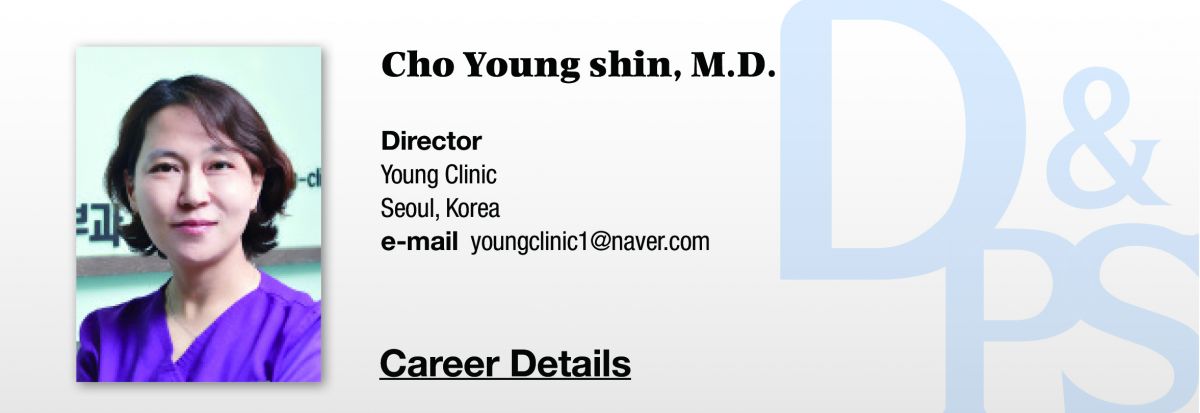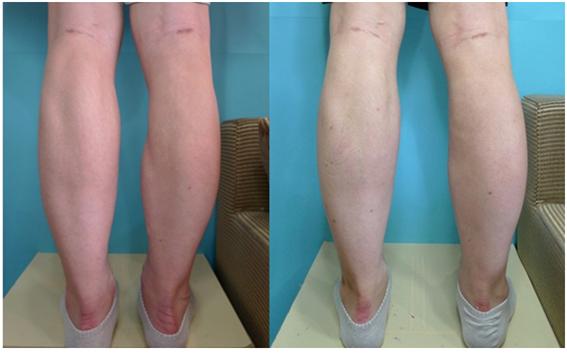
▶ Previous Artlcle: #4-2. A Case of Treatment for Side Effects of Calf Muscle Resection
Fat-derived Stem Cells and Calf Nerve Blocking
In order to treat the patient's muscle shortening and contracture, I planned to inject fat-derived stem cells directly to the muscles and then transplant fat mixed with stem cells into the dimpled area.
Two times at an interval of four weeks, 20cc of blood was taken to produce 2cc of PRP, and it was injected subcutaneously and intramuscularly. Two weeks after the second procedure, soleus muscle nerve blocking and medial gastrocnemius muscle nerve blocking were performed in the right calf and left calf, respectively.
HELIOSⅡ/LOTUSⅡ/HYPERION – Manufacturer: LASEROPTEK(www.laseroptek.com)
After four weeks, 120cc of fat was extracted and centrifuged to make a total of 53cc of fat. Additionally, 80cc of fat was extracted to separate fat and stem cells. 50% of isolated stem cells were mixed with the centrifuged fat, and then 38.2cc and 5.5cc were transplanted into the right calf and left calf, respectively.
As for the rest (50%) of the isolated stem cells, a total of 5cc was injected directly into the medial and lateral heads of bilateral gastrocnemius muscles with contracture and shortening using the 25G needle of 1cc syringe.
Three months after the reconstructive surgery, the patient’s post-operative status was evaluated along with photographing. Muscle shortening of the right calf was improved so that the back of his foot can reach the ground, and consequently difficulty in walking was resolved. Due to successful fat engraftment, dimpling on the calf was also improved.
In addition, as a result of the soleus nerve blocking in the right calf and the medial gastrocnemius nerve blocking in the left calf, muscle deformity was markedly recovered. Although a perfect restoration was impossible, it was true that difficulty in walking as well as many problems with physical appearance were resolved.

Figure 1. Photographs of a 35 years old male patient in standing position. Preoperative view(left) and post operative view at 3months(right).
-To be continued




















